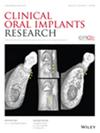Impact of Multimedia Information on Patients' Knowledge, Anxiety and Decision-Making Regarding Computer-Assisted and Freehand Dental Implant Surgery: A Randomised Clinical Trial
Abstract
Objective
This randomised clinical trial aimed to compare the effects of multimedia information and verbal explanations on patients' knowledge and anxiety as primary outcomes and decision-making as a secondary outcome.
Materials and Methods
One hundred patients needing dental replacement were randomly assigned (1:1) to either a multimedia group (n = 50) or a verbal group (n = 50). They completed self-administered questionnaires covering demographics, confidence with their awareness level, knowledge (score 0–5), anxiety (score 5–25) and decision-making before and after receiving either a multimedia or verbal explanation of implant surgery.
Results
Knowledge scores increased significantly in both groups (p < 0.001), rising from 1.96 to 3.90 in the multimedia group and from 2.00 to 3.98 in the verbal group. Anxiety levels also declined markedly over time (p < 0.001), dropping from 12.76 to 11.48 (multimedia) and from 13.92 to 12.16 (verbal). Neither the group effect nor the interaction effect was significant. No significant difference in decision change was observed in either the multimedia (p = 0.289) or verbal (p = 0.146) groups. Most patients in both groups relied on their dentist's recommendation regarding whether to proceed with freehand or CAIS, even after receiving the interventions. Meanwhile, cost remained a significant barrier to proceeding with implant therapy in both groups.
Conclusions
Both multimedia and verbal interventions significantly improved patient knowledge and reduced anxiety, although the magnitude of anxiety reduction was modest. Changes in decision-making were limited and largely influenced by cost and the dentist's recommendation. Given this single-centre design and modest sample size, caution is advised when generalising these findings.

 求助内容:
求助内容: 应助结果提醒方式:
应助结果提醒方式:


